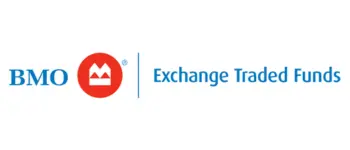Crude Strategy: Canada’s Oil ETFs
Key takeaways
Leverage vs. Stability – Leveraged ETFs like HOU offer high-risk, high-reward opportunities, while diversified funds like XEG and ZEO provide more balanced exposure.
Energy Sector Momentum – With rising oil prices and increasing global demand, Canadian energy stocks are positioned for potential growth.
Different Strategies for Investors – These ETFs offer exposure to crude oil futures, energy producers, and midstream infrastructure, catering to different risk appetites.
One ETF I like way better than the ones on this list.Oil and gas has had a wild half-decade. We’ve gone through a global shutdown in 2020 that collapsed oil prices to a travel boom in 2021/2022 that saw oil skyrocket in price.
Fast forward to 2023/2024, and we saw an economic slowdown in light of higher interest rates and sticky inflation. Where is the middle ground for oil equities and the price of oil and natural gas?
It’s hard to say. This is the most volatile environment we’ve witnessed for energy companies and energy prices in quite some time. So, if we’re going to invest, we need to be prepared for considerable swings in price.
As a result, many Canadian investors aren’t comfortable selecting individual oil stocks at this point. Instead, they are looking toward some Canadian energy ETFs that can give them exposure to the entire sector.
The broader exposure will mitigate individual equity concentration and likely lower volatility. So, I’ll dive into some of the top energy ETFs you can buy in Canada today.
Direct crude oil price exposure
Global X NYMEX Crude Oil ETF (HUC)

HUC tracks the price of NYMEX light sweet crude oil futures, giving investors a way to invest in oil prices without owning physical barrels. It is a pure-play ETF for those betting on rising oil prices.
2x leveraged crude oil exposure
BetaPro Crude Oil Leveraged Daily Bull ETF (TSE:HOU)

HOU is a high-risk, high-reward ETF that provides 2x daily leveraged exposure to crude oil prices. It’s designed for short-term traders looking to capitalize on sharp oil price movements.
Broad Canadian energy sector exposure
iShares S&P TSX Capped Energy Index ETF (XEG.TO)

XEG provides exposure to a basket of Canadian oil and gas producers, focusing on the largest energy companies in the S&P/TSX Composite Index. It’s a good option for investors seeking diversified exposure to Canada’s energy sector.
Equal-weighted energy exposure
BMO Equal Weight Oil & Gas Index ETF (ZEO.TO)

ZEO provides diversified exposure to Canadian energy stocks but gives equal weighting to holdings, reducing concentration risk from large-cap oil producers.
Tax-efficient Canadian energy exposure
Global X S&P/TSX Capped Energy Index Corp Class ETF (HXE.TO)

HXE provides exposure to the S&P/TSX Capped Energy Index, similar to XEG, but uses a corporate class structure to enhance tax efficiency. This makes it attractive for investors looking for energy sector exposure while minimizing tax drag on returns.
The bullish case for Canadian energy stocks and energy ETFs
In 2020, the oil and gas sector was decimated due to the COVID-19 pandemic. Energy companies across the globe saw their stock prices collapse, cash flows cease, and dividends were cut or suspended.
For the most part, it wasn’t hard to see how this short-term collapse in crude oil demand was temporary. In fact, we’ve witnessed a complete 180 in the industry over the last few years as energy prices have surged.
There is also the harsh realization lately that clean energy like solar, wind and hydro are a lot farther away from replacing traditional fossil fuel methods of energy generation than many predicted.
When we consider that a major producer like Canadian Natural Resources has a breakeven price in the $30 a barrel range, we can see how frothy this environment truly is for top-notch producers.
Suppose crude oil can be maintained at $70 a barrel or higher. In that case, energy stocks and oil and gas producers will be able to return significant cash flows to their shareholders via share buybacks and increased distributions, much of which we’re already witnessing.
The bullish case for oil companies during inflationary periods
Commodities perform well during inflationary periods. This isn’t just crude oil, but metals such as gold and silver. And, unless you’ve been living under a rock the last year or so, you know that policy makers, at least south of the border, are having a very hard time hitting their 2% inflation target.
Yes, it’s coming down here in Canada. However, our energy sector is heavily reliant on the United States. History has shown it takes inflation a very long time to settle, and this is no doubt apparent in the US.
So, adding some oil and gas companies to your portfolio today makes sense. Although these companies will likely underperform over the long run, we must look to commodity plays not for their past performance but for future potential.
Commodity prices like oil will rise and fall through different economic cycles, and with it, so will the Canadian energy sector. You’ll need to time your exit regarding these types of investments. But, if you catch the industry on an upcycle, money will be made.
Why Exchange Traded Funds (ETFs)?
In short, ETFs are a much better alternative to mutual funds as they have much lower fees. For those who don’t have the time or know-how to buy individual stocks in Canada, ETFs are a great way to passively invest.
This is because they allow you to buy an entire sector or basket of stocks without having to bet on an individual company to succeed. This is even more critical in the oil and gas sector.
Some companies were coming out of the pandemic that returned in excess of 1000%, while others completely fizzled out. Choosing the wrong company could have had you underperforming by a wide margin. This is why buying an energy ETF can be seen as a much better option for the average retail investor.
Finally, they provide instant diversification, a critical factor in successful investing.
Most of these top oil ETFs provide instant diversification to the sector, which could see considerable upside in 2025 and beyond.
As the saying goes, “time in the market is better than timing the market.” This has proven to stand the test of time. Taking a position in the top Canadian energy ETFs is one of the best options to diversify and gain exposure to the sector.
